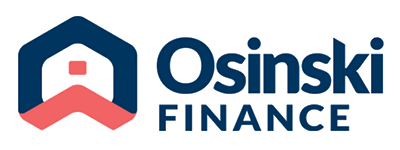Borrowing soars: average loan up almost $100,000 in 12 months
How much do you need to borrow to buy a typical Australian home these days? Well, the average loan size has increased dramatically over the past year – up almost $100,000.
The national average loan size for owner-occupier dwellings rose to an all-time high of $596,000 in November 2021, according to the latest Australian Bureau of Statistics data.
And the national average has been going up (and up and up) in recent months.
In October it was $571,000, while in November 2020 it was $503,000.
And with wages not growing anywhere near as fast, it’s more important than ever to have a professional like us in your corner when it comes to securing finance for your next home purchase.
State by state breakdown
Average loan sizes reached new highs in all states and territories in November 2021, except Western Australia (which only dropped a smidgeon below its October record high).
Here’s a quick state-by-state breakdown as of November 2021, compared to November 2020.
NSW: $769,000 – up from $644,000 (in November 2020)
Victoria: $619,000 – up from $499,000
Queensland: $514,000 – up from $440,000
South Australia: $422,000 – up from $384,000
Western Australia: $440,000 – up from $417,000
Tasmania: $446,000 – up from $373,000
Northern Territory: $433,000 – up from $380,000
ACT: $586,000 – up from $527,000
So what can you do about the rapid rise in home loan values?
Here’s the good news – especially for first home buyers.
Most of the average loan values listed above still fall below the state and territory property price caps for a number of federal government schemes, such as the First Home Loan Deposit Scheme and New Home Guarantee initiatives.
These two schemes allow eligible first home buyers to build or purchase a home with only a 5% deposit, without forking out for lenders’ mortgage insurance (LMI), which on average helps people purchase their first home 4 to 4.5 years sooner.
That’s right – 4 years sooner!
Another factor working in your favour is that the RBA’s official cash rate is at a record low and interest rates are also very low as a result (which helps when it comes to your borrowing capacity).
Speaking of which, one very important step you can take is to get in touch with us so we can help you assess your borrowing capacity.
This way, you can work out whether that property you have your eye on is a goer, and if not, identify steps you can take to help bring it within reach.
To find out more, give us a call today – we’d love to help you explore your borrowing options.
Disclaimer: The content of this article is general in nature and is presented for informative purposes. It is not intended to constitute tax or financial advice, whether general or personal nor is it intended to imply any recommendation or opinion about a financial product. It does not take into consideration your personal situation and may not be relevant to circumstances. Before taking any action, consider your own particular circumstances and seek professional advice. This content is protected by copyright laws and various other intellectual property laws. It is not to be modified, reproduced or republished without prior written consent.
The post Borrowing soars: average loan up almost $100,000 in 12 months appeared first on Osinski Finance.




